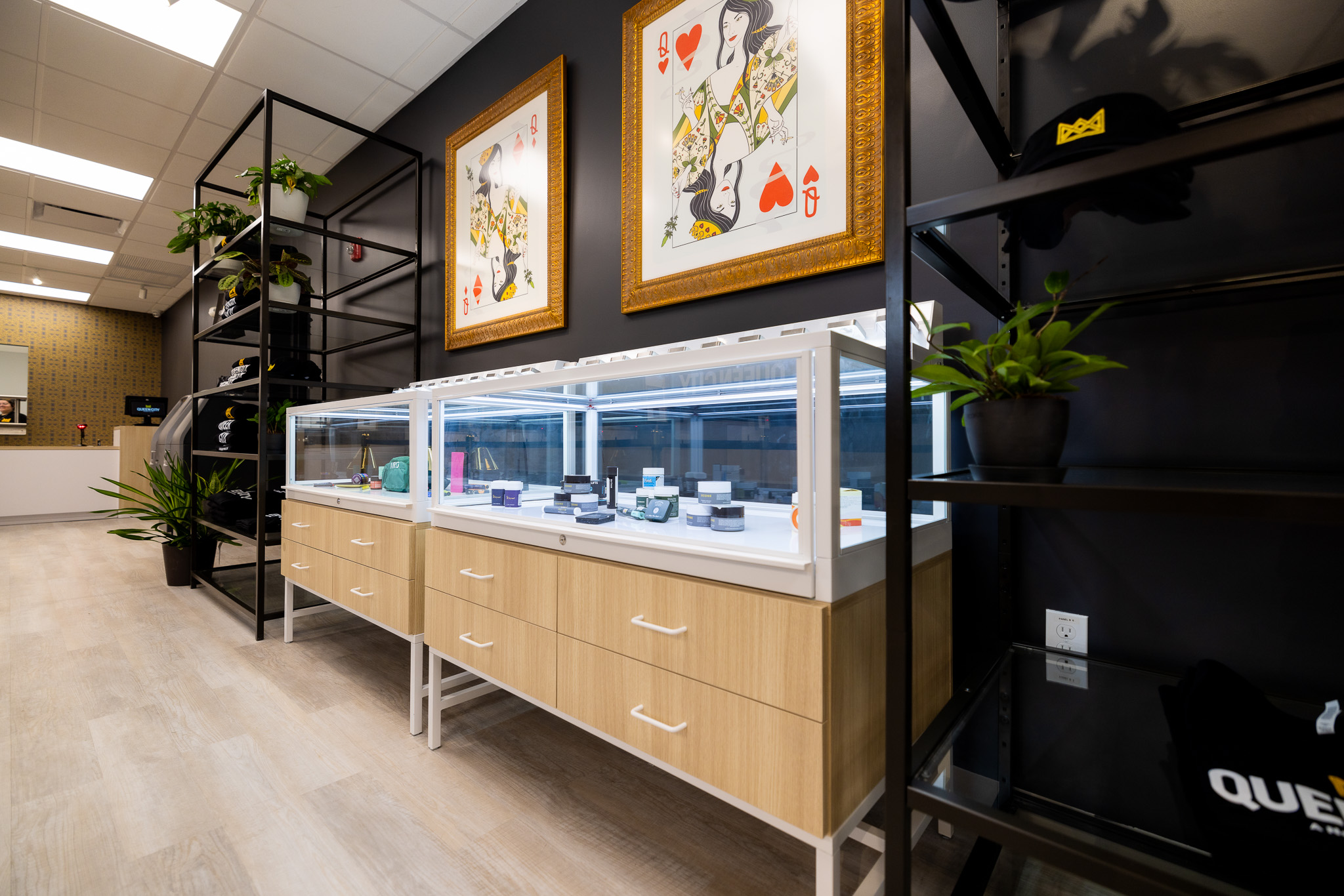To understand cannabis, you’ve got to understand cannabinoids. These intriguing compounds play a major role in what it is that makes cannabis work, so it’s important to know what they are before you head to the nearest cannabis dispensary. To provide you with a handy reference tool, we’ve created this guide to cannabinoids as your primer for all things THC, CBD, and much more.
Table of Contents
Already know the basics? Skip straight to our cannabinoids cheat sheet for descriptions of individual cannabinoids.
What are cannabinoids?
Cannabinoids are compounds found both in the resin of cannabis plants and in our bodies. Those found in cannabis are called phytocannabinoids and include household names like delta-9 Tetrahydrocannabinol (THC)and Cannabidiol (CBD). There are more than 100 phytocannabinoids that have been identified in cannabis and researchers are learning more about them and how they work every day.
The cannabinoids are made inside our bodies are known as endogenous cannabinoids or endocannabinoids for short. These are chemicals like the “bliss molecule” anandamide and 2-Arachidonoylglycerol (2-AG). Although endocannabinoids and phytocannabinoids are not precisely the same compounds, they work in the body similarly — and their effects can be wide-ranging.
What do cannabinoids do in your body?
Cannabinoids work by influencing the endogenous cannabinoid system (ECS), a biological network that regulates mood, appetite, pain perception, learning, memory, metabolism, and many more important processes in our bodies. This network comprises endocannabinoids, the cannabinoid receptors they bind to, and enzymes that produce and recycle endocannabinoids, all of which span the central nervous system and immune system.
In other words, the ECS is extremely powerful, and cannabinoids are at the center of it all.
So, where does cannabis come in? The ECS doesn’t just respond to endocannabinoids, but phytocannabinoids, too. It’s the interaction between the ECS and phytocannabinoids that creates the entire cannabis experience, from its infamous “high” to pain relief to the munchies.
A better understanding of how the ECS works and the role phytocannabinoids play is key to maximizing the therapeutic potential of cannabis. This knowledge also makes it easier for consumers to choose cannabis products that best suit their own needs. And researchers are diving deep into what makes cannabinoids tick.
For example, research has shown that THC binds to and activates the CB¹ receptor, a type of cannabinoid receptor located primarily in the central nervous system. This activation could result in many different effects, which vary depending on how much you consume. Studies have shown THC to alleviate pain, influence feelings of anxiety (for better or worse), modulate inflammation, and alter appetite, to name a few. These many effects all occur under the domain of the ECS and relate to the CB1 receptor.
It gets even more complicated when you add the other 100-plus phytocannabinoids into the mix. These compounds all work together in an “entourage effect” that enhances and changes the way each influences the ECS. Researchers are continuously examining how phytocannabinoids and the ECS interact with one another and what it means for our overall health and wellness. Over time, these studies have shed some light on several of the most prominent phytocannabinoids.
Cannabinoids cheat sheet: What are the different types?
The best way to gauge how effective a cannabis product will be for your goals is to understand the cannabinoids it contains and how they work. The following seven phytocannabinoids are required as part of third-party laboratory testing under New Jersey state law. They will appear on any full Certificate of Analysis, which you can examine for any cannabis product available at a licensed dispensary in the Garden State.
Delta-9 Tetrahydrocannabinolic Acid (THCA)
THCA is the acidic precursor to THC and is the type of THC that is found in a living cannabis plant. Although we often refer to the “THC content” of cannabis flower or extracts when describing potency, in most cases, we’re actually talking about THCA. This acidic cannabinoid only converts to THC when exposed to heat in a process called “decarboxylation.” If you plan on smoking or vaping a product, note that THCA converts to THC once you light up.
THCA may be consumed without decarboxylating it as well, such as in a tincture or edible. Unlike active THC, THCA is non-intoxicating, meaning you won’t feel high if you consume THCA in its non-decarboxylated form. The compound is also being researched for its potential anti-nausea effects, its ability to manage inflammation, and its possible anti-convulsant properties.
Delta-9 Tetrahydrocannabinol (THC)
THC is the most renowned phytocannabinoid of the bunch, responsible for the famous high that consuming cannabis imparts, but THC does a lot more than simply cause this intoxication. THC is also an effective analgesic that may have a profound impact on chronic pain, including neuropathic and inflammatory pain. THC also suppresses feelings of nausea and prevents vomiting. This, coupled with its ability to promote appetite, makes THC helpful if you have a hard time eating or keeping food down. In fact, THC is so effective for nausea and appetite that synthetic forms of it are used as prescription medication.
As is the case with most psychoactive compounds, it’s important to be mindful when consuming THC to avoid unpleasant experiences. For example, studies show that THC is effective at alleviating feelings of anxiety in low amounts, but can actually make you feel more anxious in high amounts. To be sure you have a positive experience, consider your own tolerance level to THC and adjust your sesh accordingly.
Cannabidiolic Acid (CBDA)
Like THCA, Cannabidiolic acid (CBDA) is an acidic precursor to a more familiar cannabinoid: Cannabidiol (CBD). While it’s CBD products that are best known, it’s CBDA that exists within the cannabis plant before decarboxylation. CBDA is found in significant quantities in plant fibers and seed oil and may offer potential therapeutic benefits of its own. While interest in cannabinoids like CBDA is growing, these so-called minor cannabinoids still take a backseat to bigger names like THC and CBD.
Cannabidiol (CBD)
CBD is a well-known cannabinoid, famously appearing in all sorts of products available virtually anywhere health and wellness products are sold. You can find CBD oil and tinctures, edibles, and other manufactured products.
While it may feel like CBD is everywhere and has been advertised for nearly any imaginable purpose, there’s truth behind what you may have already seen. Studies have shown CBD to be effective in managing pain, anxiety, and depression, to name a few applications.
The presence of CBD in a cannabis product may also temper the intoxicating effects of THC, reducing the intensity of the high. If you prefer a more subtle, relaxed experience, products that contain a relatively balanced amount of THC and CBD might be more suitable for this reason.
Some popular products that contain CBD at Queen City include:
- Wana Classic Yuzu 2:1 CBD:THC gummies, with 20 mg CBD and 10 mg THC per serving
- Camino Sparkling Pear 6:2 CBD:THC gummies, with 6 mg CBD and 2 mg THC per serving
- Incredibles Black Cherry chocolate bar, with 10 mg CBD and 10 mg THC per serving
Cannabigerolic Acid (CBGA)
Cannabigerolic Acid (CBGA) may not get a ton of attention, but it’s where all cannabinoids in the plant begin. Cannabigerol (CBG) is known as “the mother of all cannabinoids,” and it starts in the plant as CBGA. This compound is the first to form as the plant grows, and it’s from CBGA that the other main branches of the phytocannabinoid family – THCA and CBDA – emerge. Most of the more than 100 cannabinoids found in cannabis can trace their roots back to CBGA. This cannabinoid may also offer its own set of health benefits, including offering relief to people managing cardiovascular disease or living with metabolic disorders.
Cannabigerol (CBG)
CBG is the decarboxylated form of CBGA, which is found in mature cannabis plants only in small amounts. However, despite the limited CBG content relative to more prominent cannabinoids like THC, this little compound can do quite a bit. CBG has been observed by researchers to result in anti-inflammatory, antibacterial, and antifungal effects, as well as effects that may provide relief if you’re feeling stressed or anxious.
Cannabinol (CBN)
Cannabinol (CBN) is the byproduct of oxidized THC and, as a result, is often found in older cannabis where THC begins to degrade. Research into CBN and how it works is ongoing, but animal studies have suggested it promotes appetite and offers anti-convulsant properties. CBN is often said to result in relaxing, sedative-like effects as well, and you’ll likely see CBN on cannabis products marketed for sleep. More studies, including human trials, are needed to learn more about this minor cannabinoid.
Some popular CBN products you’ll find at Queen City include:
- Camino 5:1 THC: CBN sleep gummies
- Wana Optimal Fast Asleep gummies, 5:1:1:1 CBD:THC:CBN: CBG
- Incredibles Snoozzzeberry Chocolate Bar, 5:1 THC: CBN
Ratios, percentages, and the entourage effect: How they relate to your cannabis experience
Understanding individual cannabinoids and how they tend to work is only half the battle. It’s also essential to understand how much of a given cannabinoid is present in a product. That’s where percentages come in.
For example, when you examine cannabis flower, you may notice the label says “20% THC,” which expresses how much THC is in the product proportional to its weight. So, if you have 1 gram of flower (1,000 mg) that contains 20% THC, then that flower has approximately 200mg THC per gram.
But how will the other 80% affect you? This is where ratios become important, especially THC:CBD ratios. Generally, the more balanced a THC:CBD ratio is, the more subdued the intoxicating effects of THC will be. In other words, a product with a THC:CBD ratio that’s precisely balanced at 1:1 will typically be less intoxicating than a product with a THC:CBD ratio of 10:1.
If the same flower from the example above also contains 5% CBD (a high amount for flower, but let’s stick with it for the sake of the example), that would mean it has approximately 50mg CBD. The THC:CBD ratio, then, would be 4:1, since 200 mg THC is four times as much THC as the 50 mg CBD in the flower. You could expect this product to be rather intoxicating but far from the most potent high out there.
On many manufactured products like edibles, you won’t have to do the math. If the products contain a meaningful ratio of cannabinoids, you’ll see it listed on the package. Some products on our menu with a 1:1 THC:CBD ratio include Wana Quick Strawberry Margarita gummies and Camino Sours Orchard Peach gummies.
Why do the ratios of cannabinoids present change the effects of the product? It’s thanks to something researchers have dubbed “the entourage effect,” which describes how cannabinoids and other compounds like terpenes may work together. The theory suggests that combining different cannabinoids and terpenes in varying amounts can change the effects they produce, an important concept in trying to better harness cannabis for specific, therapeutic purposes.
How cannabinoids guide your Queen City shopping trip
So, what does all this mean for you when you come to the dispensary? Cannabinoids play a big role in the product you should choose. Consider the following when browsing:
- Personal goals: Before choosing the right product, you must know your goals. Prefer relaxation? Your top cannabis product will be different than the times you want a burst of creativity and energy. Think about what has drawn you to cannabis in the first place and start from there.
- Past experiences: Let your past seshes inform you when selecting new products. Did you take a guess on a cannabis product in the past and it didn’t pan out? Recall its cannabinoid profile and the terpenes that were present in it; it might be best to avoid other products with similar compound profiles. On the flip side, if you tried something you really loved, use its compound profile to guide you toward similar products — they may be just the right fit for you.
- Product type: Different types of products may tend to offer different cannabinoid and terpene profiles. Even similarly named products may differ greatly across types. For example, Sour Diesel flower contains considerably lower amounts of THC than a Sour Diesel extract, so be sure to check more than just the strain name on the label. Your best bet is to always closely consider cannabinoid content (as well as terpene content) before buying.
When you choose a new cannabis product and try it for the first time, take note of your experience. What did you like? What did you dislike? Jot those down alongside the cannabinoid profile, THC: CBD ratio, and terpene content to remind yourself on future shopping trips of what you enjoyed.
Cannabinoids are the reason cannabis works
Without phytocannabinoids, the special relationship between humans and cannabis simply wouldn’t be the same. Now that you’ve learned more about exactly what makes them work, you can use the cannabinoid profile of cannabis products to make more informed buying and consumption decisions.
If you’re ready to try some of the best quality cannabis in New Jersey, stop by Queen City Dispensary in the heart of central New Jersey. Our expert budtenders are ready to match you with a cannabis product you won’t soon forget!


